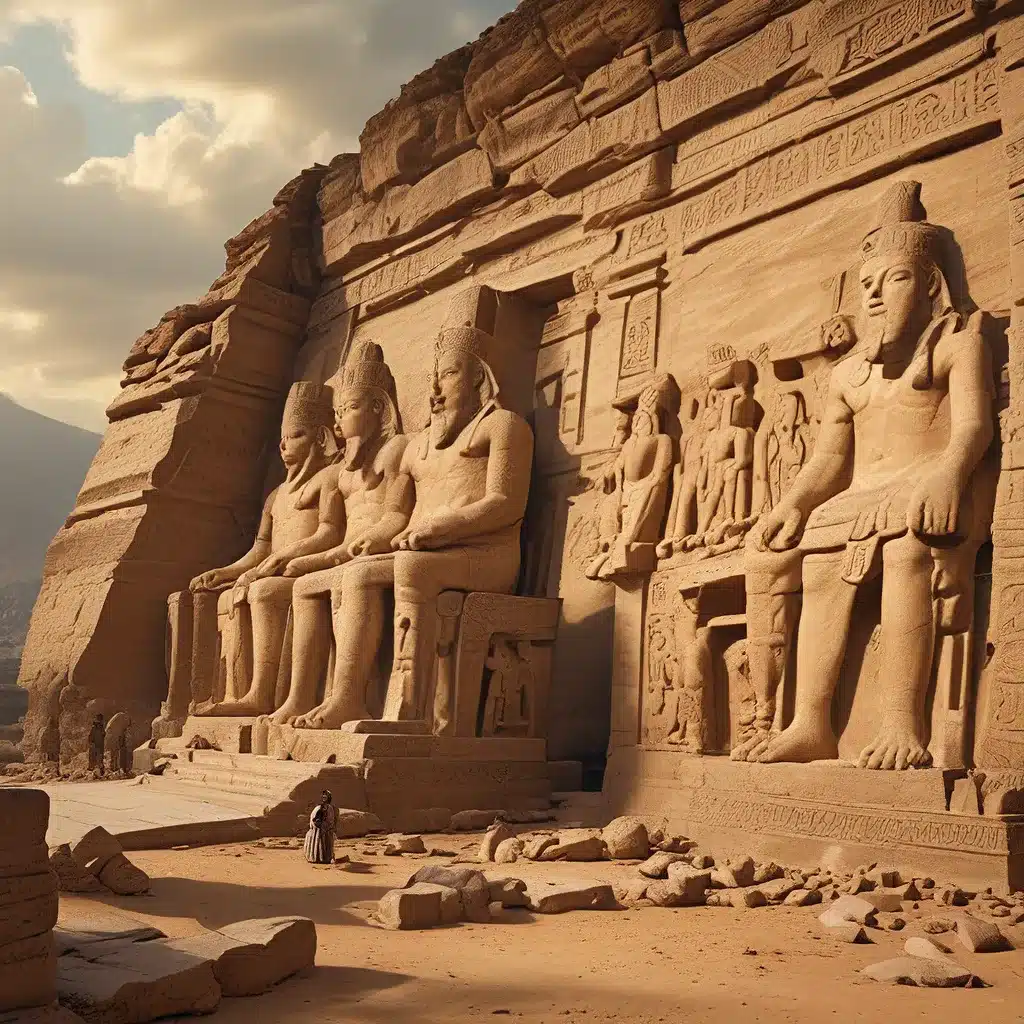
Unlocking the Secrets of the Past: Uncovering Groundbreaking Archaeological Discoveries
The study of ancient civilizations and their remarkable achievements has long captivated the minds of scholars, historians, and the general public alike. From the towering pyramids of Egypt to the intricate temple complexes of Mesoamerica, the remnants of these lost worlds continue to inspire awe and wonder. In recent years, a wave of groundbreaking archaeological discoveries has shed new light on the past, revealing the stunning technological prowess, sophisticated social structures, and profound spiritual beliefs of our ancestors.
One of the most significant archaeological breakthroughs in recent memory is the discovery of the oldest known human footprints in the Americas. Discovered in Chile, these 15,600-year-old footprints provide tangible evidence of the earliest human inhabitants of the continent, challenging long-held assumptions about the timing and nature of the first migrations into the region. The discovery of these remarkable imprints not only sheds light on the ancient peopling of the Americas but also highlights the important role that archaeological findings can play in rewriting our understanding of human history.
Uncovering the Mysteries of Lost Civilizations
Alongside these remarkable footprint discoveries, archaeologists have also made significant advancements in unraveling the secrets of other ancient civilizations. In the jungles of Central America, for example, the use of cutting-edge lidar technology has revolutionized our understanding of the Maya, revealing the staggering complexity and scale of their urban centers. These advanced remote sensing techniques have allowed researchers to map intricate networks of roads, canals, and settlements, shedding new light on the sophisticated infrastructure and population density of this remarkable civilization.
Similarly, in the deserts of the Middle East, recent excavations at the lost city of Ubar have provided valuable insights into the trading networks and cultural practices of the ancient Frankincense Trail. Once thought to be nothing more than a legendary lost city, Ubar has now been firmly established as a thriving hub of commerce and religious activity, offering a tantalizing glimpse into the vibrant commercial and cultural exchanges that took place across this ancient trade route.
Unraveling the Mysteries of Dinosaur Paleontology
Alongside the remarkable discoveries of ancient human civilizations, the field of dinosaur paleontology has also seen a surge of groundbreaking findings in recent years. The unearthing of new dinosaur species and the reexamination of existing fossil evidence have challenged long-held assumptions about the evolution, behavior, and ecosystem relationships of these prehistoric creatures.
One particularly exciting discovery is the nearly complete skeleton of a new dinosaur species found in Argentina, which has provided unprecedented insights into the physical characteristics and evolutionary adaptations of these ancient beasts. The detailed analysis of this remarkable fossil has shed light on the complex interplay between different dinosaur species and their environments, ultimately broadening our understanding of the prehistoric world.
Moreover, the application of advanced imaging techniques, such as CT scanning and 3D modeling, has allowed researchers to delve deeper into the internal structures and biomechanics of dinosaur fossils, revealing new information about their physiology and behaviors. These technological advancements have enabled paleontologists to create more accurate and detailed reconstructions of dinosaur anatomy, providing a clearer picture of how these creatures lived, moved, and interacted with their environments.
Integrating Ancient Wisdom with Modern Understanding
As we continue to uncover the secrets of the past, it is essential to recognize the importance of integrating ancient knowledge and cultural perspectives with our modern scientific understanding. Many indigenous cultures around the world have long held deep connections to the land and a profound understanding of the natural world, which can complement and enrich our archaeological and paleontological findings.
For example, the Indigenous peoples of the Americas have a rich tradition of oral histories, mythologies, and traditional ecological knowledge that can shed light on the ways in which ancient civilizations interacted with their environments and the spiritual significance they attached to the natural world. By actively engaging with these cultural perspectives, researchers can gain a more holistic and nuanced understanding of the past, ultimately leading to more meaningful and impactful interpretations of archaeological and paleontological discoveries.
Furthermore, the study of ancient cultures and their technological achievements can inspire innovative solutions to modern challenges. The architectural marvels of the past, such as the intricate water management systems of the Inca or the advanced construction techniques of the Aztecs, can provide valuable insights into sustainable engineering practices that could be applied to contemporary urban planning and infrastructure development.
Embracing the Mysteries of the Past
As we continue to uncover the wonders of the ancient world, it is essential that we approach these discoveries with a sense of humility and wonder. The achievements of our ancestors, whether in the realm of archaeology, paleontology, or cultural traditions, serve as a powerful reminder of the depth and complexity of human experience throughout history.
By delving into the mysteries of the past, we not only gain a deeper understanding of our own origins and the evolution of life on Earth but also cultivate a greater appreciation for the resilience, ingenuity, and spiritual richness of the human experience. As we continue to push the boundaries of our knowledge, let us embrace the ever-unfolding story of our shared past, and use these insights to build a more sustainable, equitable, and enlightened future.


